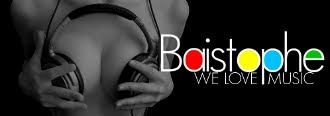Four decades on, and Comme à la Radio still sounds magical: an alchemical experiment of fusing songform with avant-gardism that manages to sound both effortless and studied; a cross-cultural, cross-genre marriage that manages to transcend its naked ambitions and birth a new musical form with, seemingly, every single spin.
Often working around a centralized 'space,' the songs foreground Fontaine's half-sung, half-spoken poetry, which avoids traditional notions of rhyme and meter, fashioning rhythms with the sense of interior monologues, or half-imagined lullabies. Belkacem, who's largely responsible for the arrangements, uses many of the musical markers of North African music —hand percussion, natural drones— but counter-balances them with traditional Western classical timbres like cello and piano. And the Art Ensemble of Chicago, rather than firing-out twin sax honk or blustering avant-gardism, work within the framework of the shape-shifting songs: their oddball woodwinds and Malachi Favors Maghostut's melodic, wandering bassplaying remaining forever alive to Fontaine's every discursive intonation.
Though its elements can seem amusical when parsed separately, Comme à la Radio is no work of ornery experimentation. Its various musical elements are all, at essence, deconstructive —Fontaine breaking down traditional song-forms, Belkacem musical/cultural boundaries, the AEC the increasingly-stringent definition of 'jazz'— but the album has a magnificent sense of wholeness, of togetherness; the players united, on these dozen songs, in the desire to discover a musical 'other'.
Often working around a centralized 'space,' the songs foreground Fontaine's half-sung, half-spoken poetry, which avoids traditional notions of rhyme and meter, fashioning rhythms with the sense of interior monologues, or half-imagined lullabies. Belkacem, who's largely responsible for the arrangements, uses many of the musical markers of North African music —hand percussion, natural drones— but counter-balances them with traditional Western classical timbres like cello and piano. And the Art Ensemble of Chicago, rather than firing-out twin sax honk or blustering avant-gardism, work within the framework of the shape-shifting songs: their oddball woodwinds and Malachi Favors Maghostut's melodic, wandering bassplaying remaining forever alive to Fontaine's every discursive intonation.
Though its elements can seem amusical when parsed separately, Comme à la Radio is no work of ornery experimentation. Its various musical elements are all, at essence, deconstructive —Fontaine breaking down traditional song-forms, Belkacem musical/cultural boundaries, the AEC the increasingly-stringent definition of 'jazz'— but the album has a magnificent sense of wholeness, of togetherness; the players united, on these dozen songs, in the desire to discover a musical 'other'.
1. Comme A La Radio
2. Tanka 2
3. Le Brouillard
4. J'Ai 26 Ans
5. L'Eté L'Eté
6. Encore
7. Leo
8. Les Petits Chevaux
9. Tanka 1
10. Lettre A Monsieur Le Chef De Gare De La Tour De Caro
2. Tanka 2
3. Le Brouillard
4. J'Ai 26 Ans
5. L'Eté L'Eté
6. Encore
7. Leo
8. Les Petits Chevaux
9. Tanka 1
10. Lettre A Monsieur Le Chef De Gare De La Tour De Caro





No comments:
Post a Comment